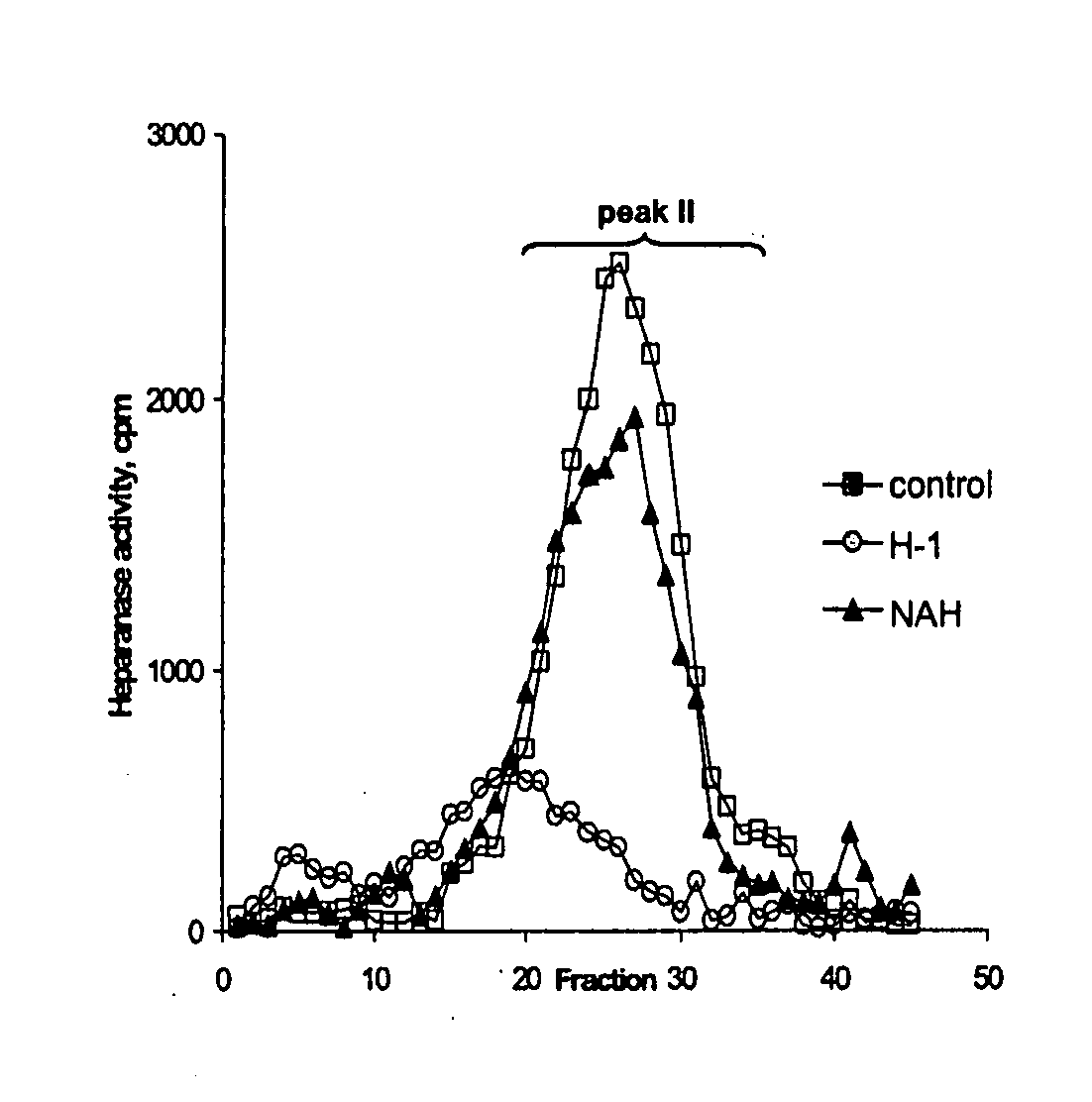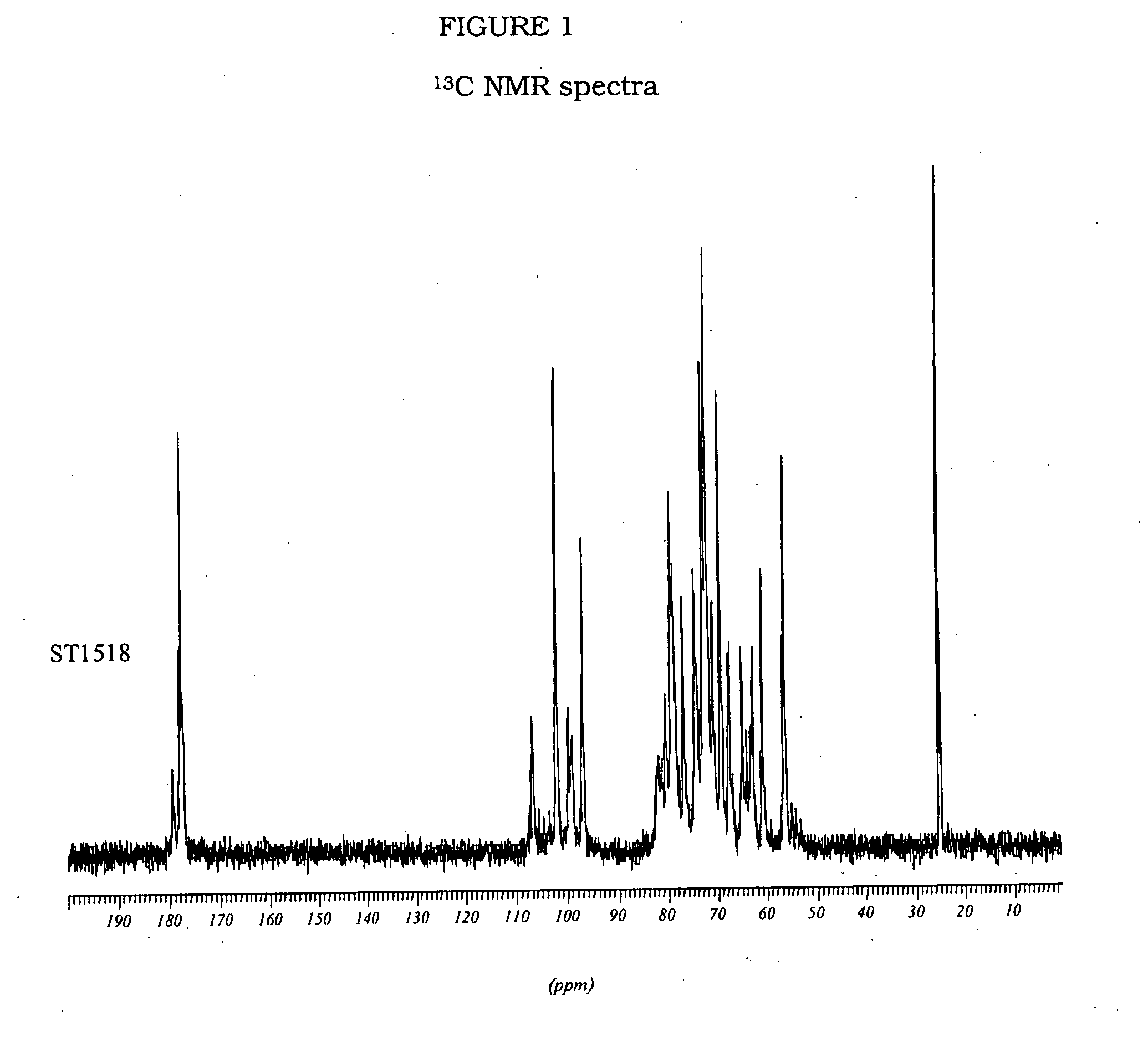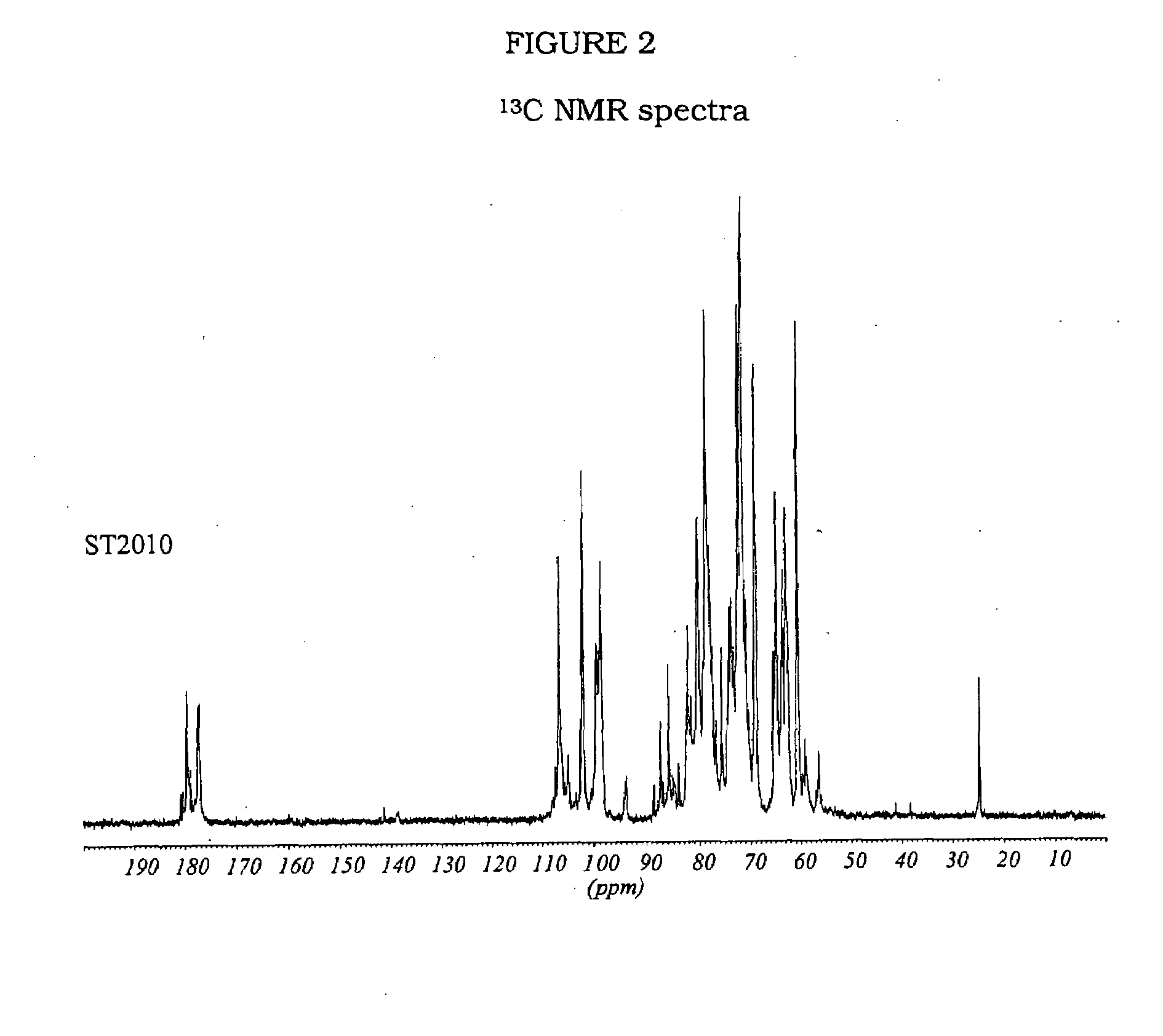Derivatives of partially desulphated glycosaminoglycans as heparanase inhibitors, endowed with antiangiogenic activity and devoid of anticoagulating effect
a technology heparanase inhibitors, which is applied in the field of derivatives of partially desulphated glycosaminoglycans as heparanase inhibitors, can solve the problems of reducing the migration ability of tumour cells from the primary tumour to other organs, affecting the treatment effect of angiogenesis disorders, and affecting the ability of heparin to be used in the treatmen
- Summary
- Abstract
- Description
- Claims
- Application Information
AI Technical Summary
Benefits of technology
Problems solved by technology
Method used
Image
Examples
example 1
ST1518
[0153]An excess of pyridine was added to an aqueous solution of 1 g of heparin, previously eluted from a column of Amberlite IR 120. The solution was evaporated under reduced pressure; the resulting pyridine salt of the heparin was dissolved in 50 ml of a mixture of DMSO / H2O 95:5 and stirred at 20° C. for 2 hours, in order to obtain a desulphation degree of about 50%.
[0154]Then, the solution was diluted with an equal volume of a saturated solution of NaHCO3. The solution was dialysed against distilled water in membranes (cut-off 1000-2000 D). The final product was isolated by evaporation under reduced pressure.
[0155]N-acetylated heparin was prepared by N-acetylation of 50% N-desulphated heparin. 1 g of heparin was dissolved in 10 ml of distilled water; the solution was cooled to 4° C. and saturated with sodium hydrogen carbonate; 625 μl of acetic anhydride were added to this solution and the mixture was stirred for 2 hours at 4° C. During the reaction, pH was controlled and ma...
example 2
ST2010 and ST2184
[0158]5 g of heparin is dissolved in 63 ml of a solution NaOH 1N. The solution is left to stir for 45 min at 60° C., cooled and neutralized with diluted HCl. Then, the solution was stirred for 48 h at 70° C., cooled and dialysed against water in membranes (cut-off 2000-1000 D).
[0159]2 g of 2-O-desulphated heparin is dissolved in 50 ml of distilled water and cooled to 4° C. after the addition of 50 ml of a solution of NaIO4 0.2 M, the solution is left to stir in the dark for 20 hours, and the reaction is stopped by adding ethylene glycol and the salts are eliminated by tangential ultrafiltration. 800 mg of NaBH4, subdivided in several portions, are added to the desalted solution. The solution is left to stir for 3 hours at ambient temperature, then neutralized with diluted HCl and desalted by tangential ultrafiltration.
[0160]400 mg of oxidated-reduced heparin are dissolved in 25 ml of distilled water. After the addition of 7 mg NaNO2, the pH is adjusted to 2 with dil...
example 3
ST2041
[0162]An excess of pyridine was added to an aqueous solution of 2 g of heparin, previously eluted from a column of Amberlite IR 120. The solution was evaporated under reduced pressure; the resulting pyridine salt of the heparin was dissolved in 100 ml of a mixture of DMSO / H2O 95:5 and stirred at 20° C. for 4 hours, in order to obtain a desulphation degree of about 64%.
[0163]Then, the solution was diluted with an equal volume of a saturated solution of NaHCO3. The solution was dialysed against distilled water in membranes (cut-off 1000-2000 D). The final product was isolated by evaporation under reduced pressure.
[0164]The 13C NMR spectrum of the compound ST2041 is shown in FIG. 3.
PUM
| Property | Measurement | Unit |
|---|---|---|
| temperature | aaaaa | aaaaa |
| temperature | aaaaa | aaaaa |
| temperature | aaaaa | aaaaa |
Abstract
Description
Claims
Application Information
 Login to View More
Login to View More - R&D
- Intellectual Property
- Life Sciences
- Materials
- Tech Scout
- Unparalleled Data Quality
- Higher Quality Content
- 60% Fewer Hallucinations
Browse by: Latest US Patents, China's latest patents, Technical Efficacy Thesaurus, Application Domain, Technology Topic, Popular Technical Reports.
© 2025 PatSnap. All rights reserved.Legal|Privacy policy|Modern Slavery Act Transparency Statement|Sitemap|About US| Contact US: help@patsnap.com



